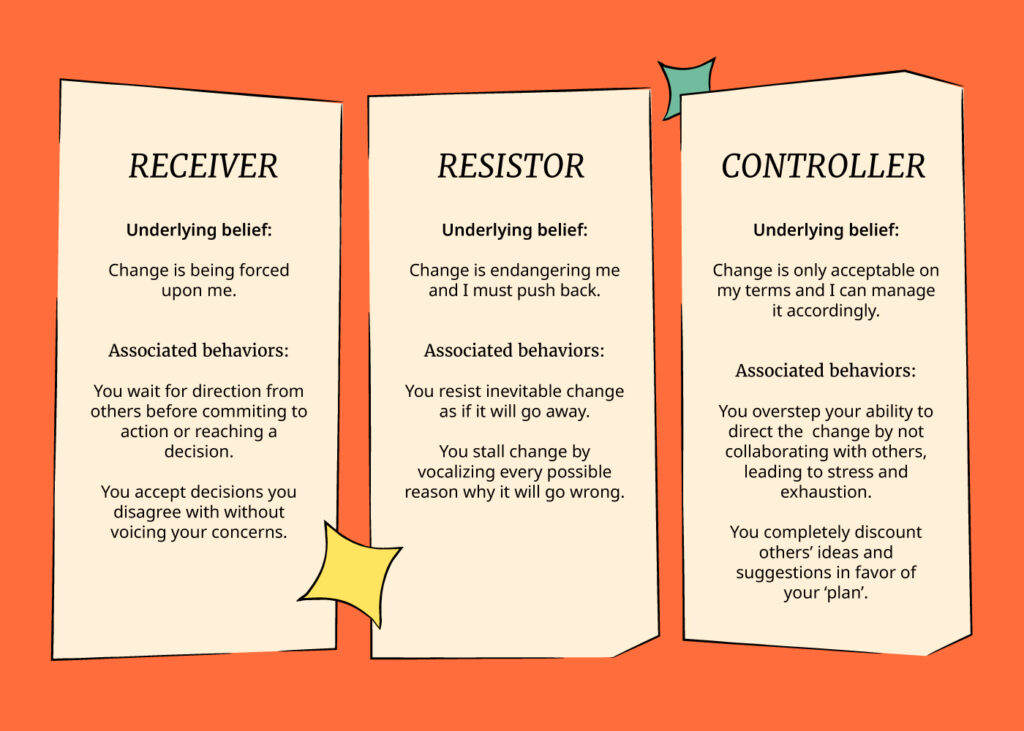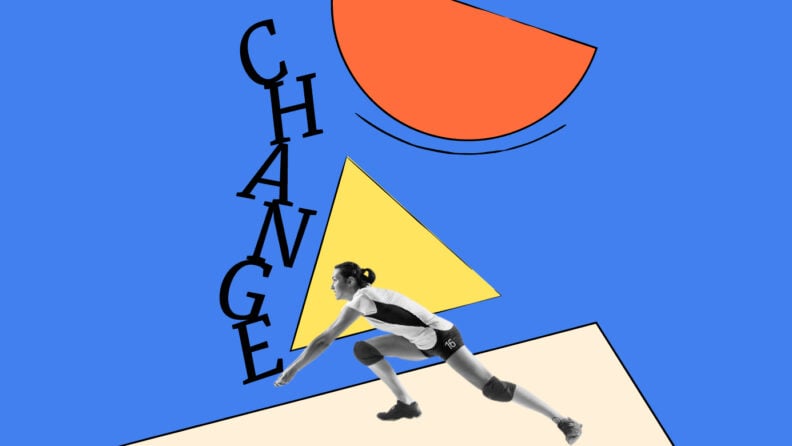Fear of the unknown affects many of us on some level when we face an upcoming change.
This fear may manifest itself as anxiety and a whole range of other negative emotions that cause us pain.
Some of us experience this when we move to a new city for the first time, or report to work for our first day.
This fear of the unknown may cloud our judgment and prevent us from seeing the positives about our newfound circumstances—the possibilities and opportunities that emerge when we finally take the first leap forward.
Sometimes, the way forward starts as a slip from the side of an unstable sailboat, and ends with an unexpected (and completely unwelcome) plunge into the ice-cold sea without a life vest.
Fortunately, that is not exactly the kind of plunge I took in April 2020, but I did take an unexpected (and at the time, unwelcome) plunge into a challenging situation over which I had minimal control but for my response.
I lost my then-new corporate HR Business Partner role to the COVID-19 pandemic, and, because my identity then was largely based on my career success, I briefly lost my sense of self.
For a couple months, the anxiety, fear, and shame I felt following my lay off clouded my judgment and prevented me from recognizing that a vast array of opportunities had materialized before me.
When I finally opened my heart, mind, and eyes to them, I excitedly embraced my newly reframed privilege, and decided to pursue the endless possibilities of what could come next.
In this article, we are going to focus on the mindset shift required to chase change and pursue the possibilities so that we can better adapt to our ever-changing world and maximize our ability to manifest desirable outcomes.
How we choose to reframe challenges and obstacles largely determines our future success and mitigates the limitations we set upon ourselves.
Fortunately, we are fully equipped to recontextualize how we perceive the world; we can choose to chase change, accept it, and focus on the opportunities present before us.
Related Read: What Will It Take To Build A Better World Of Work?
From Change-Averse To Possibility-Minded
“Possibility Thinking is the willingness to see possibilities everywhere instead of limitations.” — John Maxwell
Evidence suggests that we are evolutionarily dispositioned to fear and avoid uncertainty.
In the earlier days of human history, the existence of that fear makes sense—uncertainty over whether we had enough resources to survive in the short-term was reasonable and served as a survival tool.
But most of us no longer live in a world where an unfamiliar face means certain death. Most of us do not live in a world in which we depend on unexamined and unhelpful habits based on survival.
While we still live in a world full of risk, we live in one where the stakes are lower. We can combat this urge to perceive change and uncertainty as a threat and instead adopt a spirit of curiosity.
Curiosity can lead to discovery when we leverage our uncertainty to reimagine, reframe, and recognize our initial responses, question them, and consider alternative ways of thinking—thinking in terms of the possibilities.
This in turn enables us to see and pursue the opportunities within these possibilities.
Possibility Thinking enables us to go beyond mere optimism and allows us to focus on what we know and on what can be done. This opens us up to embracing change, solving unexpected problems, and navigating our way forward even when the future is uncertain.
But before we delve more deeply into Possibility Thinking, we must understand the different ways in which we adopt or default to a change-averse mindset.
Three Change-Averse Mindsets To Recognize, Avoid, And Reject
Before you can determine how to shift their mindset to you focused on the possibilities, it’s first necessary to determine which of the following three mindsets you’ve adopted or defaulted to.
Which of these mindsets and associated behaviors seem familiar to you when faced with disruptive change?

Making The Shift—From Default To Deliberate
Do any of those underlying beliefs or associated behaviors ring a bell to you?
Personally, I resonate with the “Receiver” default mindset and can recognize times in my life where I gave up my sense of agency and “let” change happen to me, even though I suspected there might have been a better or different way.
Sometimes my concerns were way off but, sometimes, my concerns turned out to be spot on. I can recall enough occasions on which I think, in hindsight, “If only I had said something.”
So how do you shift from the three change-averse mindsets outlined above toward a possibility mindset ready for opportunity?
To illustrate what this might look like in practice for each of these change-averse mindsets, let us use a hypothetical workplace example and walk through what this shift might look like for the Receiver, Resistor, and Controller mindsets.
Hypothetically Speaking—A Workplace Thought Experiment
Imagine you have just found out that your company is going to undergo extensive structural changes and you will be largely involved in every phase of the change for your respective team.
Let us further imagine that you are on one of the teams that will be first impacted and serve as a pilot for how the restructure can be successfully implemented throughout the rest of the organization.
By the end of the restructure, some folks will have updated job responsibilities, will report to new managers, and work in new teams.
This being the case, there is a lot of uncertainty about how to implement this change and there is no reference to look to for guidance on how to support your team get through the change.
Sounds scary, right? Luckily it doesn’t have to be. Let’s examine how you might make the shift to a possibility mindset from each of the change-averse ones.
Each shift starts asking oneself the following “3 Change Check-in questions”:
- What do I think about this change?
- How does this change make me feel?
- What can I do to make this change easier for me and everyone affected?
The 3 Change Check-in Questions enable you to take a step back and improve your level of self-awareness in the face of change. They give you a chance to take a step back and accurately gauge your thoughts and feelings about the change.
Becoming aware of these factors will also bring a level of self-awareness around your own behavior. When you begin by asking yourself those questions, you begin to inspect your underlying assumptions, question them, and can start considering the opportunities once you overcome your initial reaction.
Making The Mindset Shift
The Receiver Mindset
If you default to a “receiver” mindset, your challenge stems from passively submitting to the change, even when you disagree or see a potential problem.
To truly accept change, one must take an active role in acknowledging the change in question, one’s thoughts and feelings on the change, and then act with intention to identify opportunities within the change.
Using the workplace example outlined above, here are tactics someone with a receiver mindset might leverage to make the shift to a possibility mindset.
- Reflect on the change using the 3 Change Check-in questions
- Generate ideas
- Use data to support your perspective
- Vocalize concerns
- Offer solutions to potential problems.
By first checking in with yourself to consider the change, and then becoming an active participant in making it work, you position yourself as a proactive, possibility-minded professional willing to examine and embrace change rather than passively accepting it.
The Resistor Mindset
If you’re a “Resistor”, you view the change in question as a threat, thereby preventing yourself from acknowledging any potential benefits and responding to make use of those benefits. Your resistance limits the opportunities that may emerge from the change.
Using the same workplace example detailed above, here are tactics a “Resistor” can use to transition into a possibility mindset:
- Reflect on the change using the 3 Change Check-in questions
- Keep yourself informed about the change
- Ask exploratory questions in search of solutions to problems you foresee
- Focus on how the benefits of the change will positively affect you and others
- Leverage your strengths in response to challenges that arise throughout the change.
By becoming aware of your reservations, and examining whether the benefits of the change outweigh the potential risks that come with it, you position yourself to ensure your concerns are expressed.
Keeping yourself informed and asking questions, instead of intentionally poking holes to try and stop a change enables you to explore the potential good in the change, enables you to be a productive participant in the change process.
The Controller Mindset
If you’re a “Controller”, you over-impose your will on the change in question where that is not necessarily possible. Your attempt to forcibly manage change leads to unnecessary stress, exhaustion, and potentially burnout.
Here are tactics a Controller can use to shift to a possibility mindset using the workplace example from earlier:
- Reflect on the change using the 3 Change Check-in questions
- Seek honest feedback from others about your ideas and concerns
- Gather different perspectives to ensure the change addresses as many people’s needs as possible
- Support others involved with the change by helping them develop their ideas and solutions
- Focus on how to navigate challenges rather than worry about whether you will have them.
Similar to how folks shift from the other change-averse mindsets, controllers can move to a possibility mindset by first understanding their thoughts and feelings about the change.
By soliciting ideas and help from others, you position yourself as a coach who is willing to empower and support others through change. Rather than shoulder the burden that comes with potential challenges, you share the load and expose yourself to new ideas.
This in turn enables you to approach the change in terms of possibilities, benefit from understanding others’ perspectives, and help others learn and contribute to the change.
Possibility Thinking Promotes A Purposeful Life
Possibility Thinking rests on the premise there are hidden possibilities and opportunities in the many facets of our lives.
To move towards a possibility mindset, one must first become aware of their own thoughts, feelings, and reactions towards change and uncertainty.
Doing so, and then following some of the guidelines outlined for shifting away from each of the change-averse mindsets, allows us to recognize that there are likely hidden opportunities within any given situation.
When we recognize that the opportunities exist, and begin to identify them as they emerge, we begin entertaining new ways of thinking and doing and thereby enrich our lives by leveraging our findings to our advantage.
As you train yourself to overcome your default responses to change and approach problems and novel situations from a variety of different perspectives, you will get better at identifying larger quantities of better quality opportunities. Take inventory of these opportunities and act on the ones that promote your ability to accomplish your goals - personal and professional.
Then, take it further: Become the best version of yourself.
Go after the opportunities that bring you closer to this best version of yourself, and chase change with confidence.
As you get the hang of it, you will, over time, build resilience (see this excellent article by Tim Reistma) and trust in your ability to make good decisions in the face of uncertainty.
Also Worth Checking Out:





